12 People Who Didn’t See the Twist Coming Until It Hit

Let’s pretend that humanity faces a huge threat from outer space. We’ll imagine that a giant planet-eating octopus comes to our solar system to eat Venus, Mars, Earth, Jupiter, and other planets, except Saturn. Therefore, people decide to move to the big planet with giant rings.
Fortunately, they already have cool technologies that allow them to make such trips. So, we quickly get into giant ships, take off, and fly to Saturn. Life on the planet itself is impossible because it has no solid ground. The ship won’t be able to land there. This is a giant gas ball that is 9 times wider than Earth.
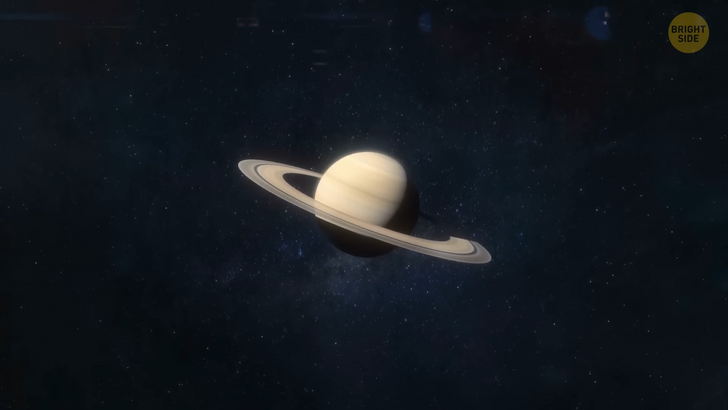
To compare their sizes, look at a 5-cent coin and a baseball. And the planet’s atmosphere consists mainly of hydrogen and helium. So, if the ship starts to land, it will never reach solid ground. And the lower it goes, the higher pressure it will experience. Eventually, the ship will just be crushed.
Therefore, we have only one choice — the rings of Saturn. They’re made up of giant, medium-sized, and tiny particles of ice and rock flying around the gas giant at tremendous speed. They were formed from comets flying by. Saturn’s gravity knocked these celestial bodies off their course and crushed them with its pressure. Fragments of these comets began to accumulate around Saturn, forming rings.
Some of these particles fly faster, some are slower. The closest to the planet is the D ring. It’s followed by rings C and B. Then there’s a large gap called Cassini Division. Rings A, F, G, and E come after. This classification is very convenient for creating a ring map. So, people approach the rings but don’t dare to land on them. First, they send test capsules with robots to scout the area. The robots choose a suitable location on the E ring.
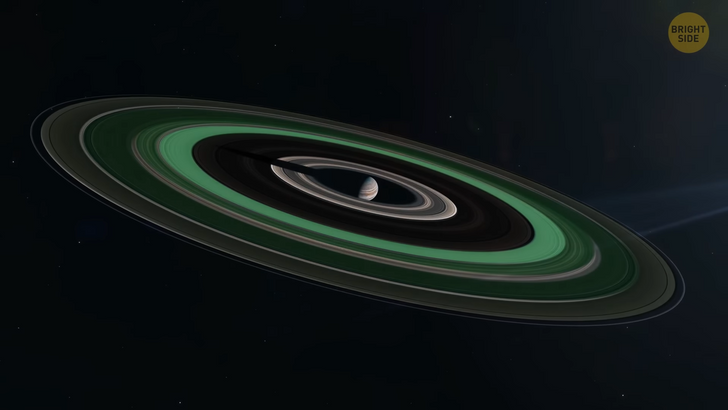
In fact, the distance between the rocks is quite large, and the ship can easily fly there. There are tiny particles, huge rocks the size of a house, and comets the size of a whole mountain. The first robot flies up to a large rock at high speed. At this moment, a baseball-sized stone pierces the robot’s body. Another robot gets smashed between two colliding boulders. The third robot gets caught in the rain of sharp icicles and breaks.
People have big engineering workshops on their ships, so they build new capsules and new robots. This time, they’re made of more durable materials. So, the robots reach a big rock again. A few particles crash into them but don’t break through the armor. The machines set up a small station on a flying rock where people can live. But after a couple of hours, a big chunk of asteroid smashes the station.
It seems we need another strategy. Giant ships scan the entire area of the E ring and calculate the trajectories of billions of stones. After lengthy calculations, people finally find the perfect places in the midst of this chaos that will stay intact for a long time. They land on these large rocks in their capsules and begin to settle down. They build stations and small houses and install powerful batteries on them. Saturn is located at a distance of 9.5 astronomical units from the Sun. One unit is the distance from the Sun to Earth.
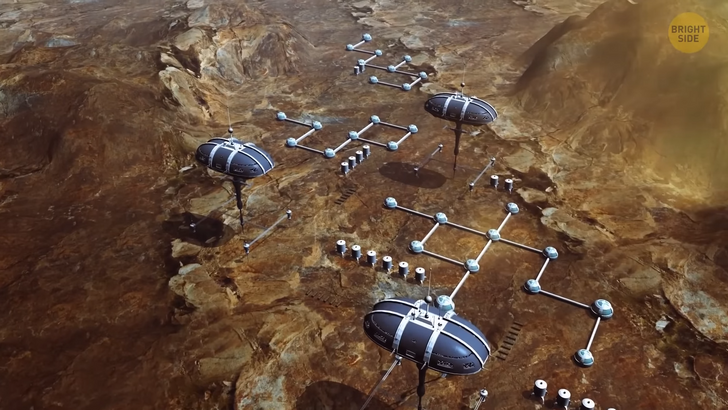
So, Saturn is a pretty cold place. That’s why there’s so much ice flying around it. But how to get the energy to heat it all up? There’s too little of it on large ships. Besides, solar panels are ineffective here because of the great distance from the Sun. Therefore, scientists create a way to generate kinetic energy from flying stones. It’s like a windmill — when the wind drives the fans, these movements are converted into energy. So, engineers build panels that collect power from moving stones. But it doesn’t slow the speed of rocks down because Saturn’s gravity continues to move them. Thus, people receive a source of almost limitless energy.
Some space stations have plants and trees that produce oxygen through photosynthesis. Only instead of sunlight, they get energy from ultraviolet. Then people fill large tanks with oxygen and carry them to their homes. People begin to occupy the adjacent rings. You don’t need to use a lot of fuel to get from one place to another. You can land on a rock, calculate its route and wait for it to bring you to the needed point. Then you can move to another one and so on until you reach your destination.
More and more people leave their ships and move to the rings. It seems that life is getting better, but then psychological problems begin. Constant movement in the vacuum of space drives everyone mad. Imagine living on a carousel that never stops. You can’t walk to the store whenever you want because it always flies away. No one can go out for a walk, even in a spacesuit, because there’s a chance to come across a rock flying at high speed. You can’t plan anything because, at any moment, your plans can be ruined by a giant piece of ice.
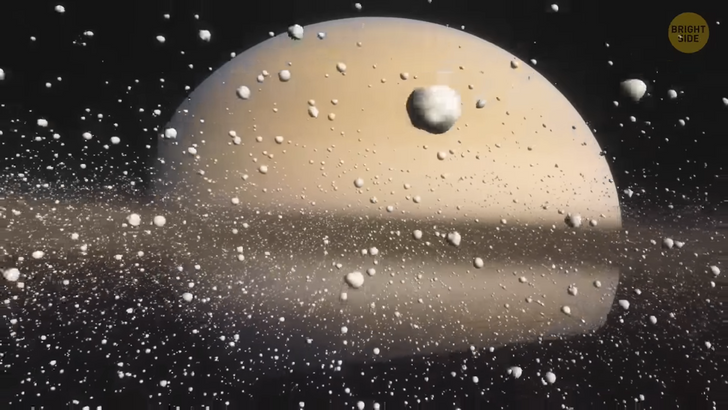
Computers don’t help either. They can’t calculate the trajectories of all space bodies. Rocks tend to break and split into hundreds of smaller ones. Also, new comets fly by and also become part of the rings. All this creates uncertainty and causes a sense of anxiety in people. Besides, it’s dark, cold, and very lonely on the rings. Think about building a base on a space object.
But your best friend lands on another one a few miles away. Then a giant icicle crashes into his rock and increases its speed. And a few days later, your friend is too far away. And it happens all the time. The only way to change your life is to settle on one of Saturn’s moons. The planet has 83 of them. People have already confirmed and named 63, and the existence of 20 others has yet to be confirmed. They’re all like different worlds. Some of them may be habitable. And the best candidate among them is Titan.
There may be water on it, and its atmospheric pressure is only one and a half times greater than Earth’s. Its atmosphere consists of nitrogen and a little methane, forming carbon smog in Titan’s upper layers. For this reason, we can’t study this moon from Earth. But the coolest thing is that Titan flies outside the rings of Saturn. This means that people can lead a quiet life there. There’s also satellite Phoebe covered with craters like our Moon.
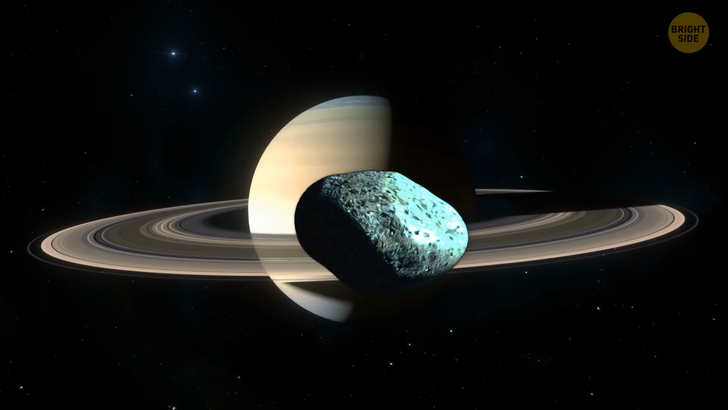
This giant celestial body looks more like a gigantic meteorite. People have a lot of choices of where to start a new life. During a couple of hundred years spent on ships near Saturn, humanity would learn everything about its satellites. But why did they try to live on the rings? Why didn’t they land on one of the moons from the very beginning? Because then this video would be less fun, and a whole lot shorter!
But what if we were initially born inside the rings of Saturn? Let’s say a massive meteorite with frozen water got caught by the planet’s gravity. There were the simplest life forms inside the ice. And then, this life began to acquire more developed forms. Imagine that the large rock managed to remain untouched for hundreds of millions of years. And during this time, humans appeared. But of course, they would be very different there. Firstly, they wouldn’t experience gravitational forces. This would make them taller but weaker.
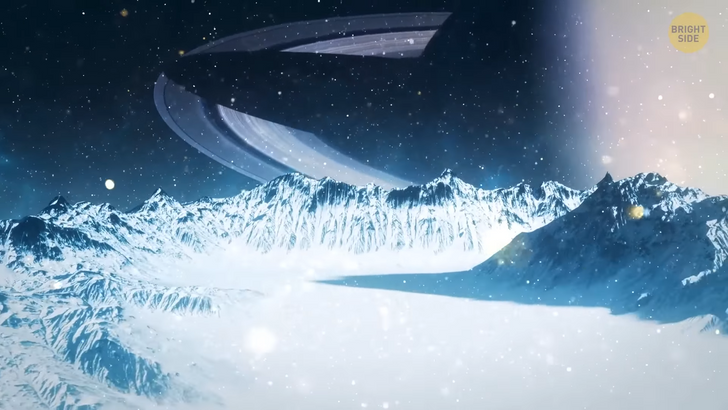
People’s skin would be pale because of lack of light, but very hardy, thanks to cold temperatures. Particles of ice and grains of sand flying in space would roughen people’s skin. In such biological armor, without gravity, they would jump from one rock to another in search of food and water. And by the way, that would be the main problem.
How would people survive without oxygen in the vacuum of space? Where would they get their food? Saturn’s rings are a pretty lifeless and dangerous place. If there are not even the simplest forms of life there, then how would such a complex one as the human appear? Therefore, even in theory, the appearance of people would be impossible there.











